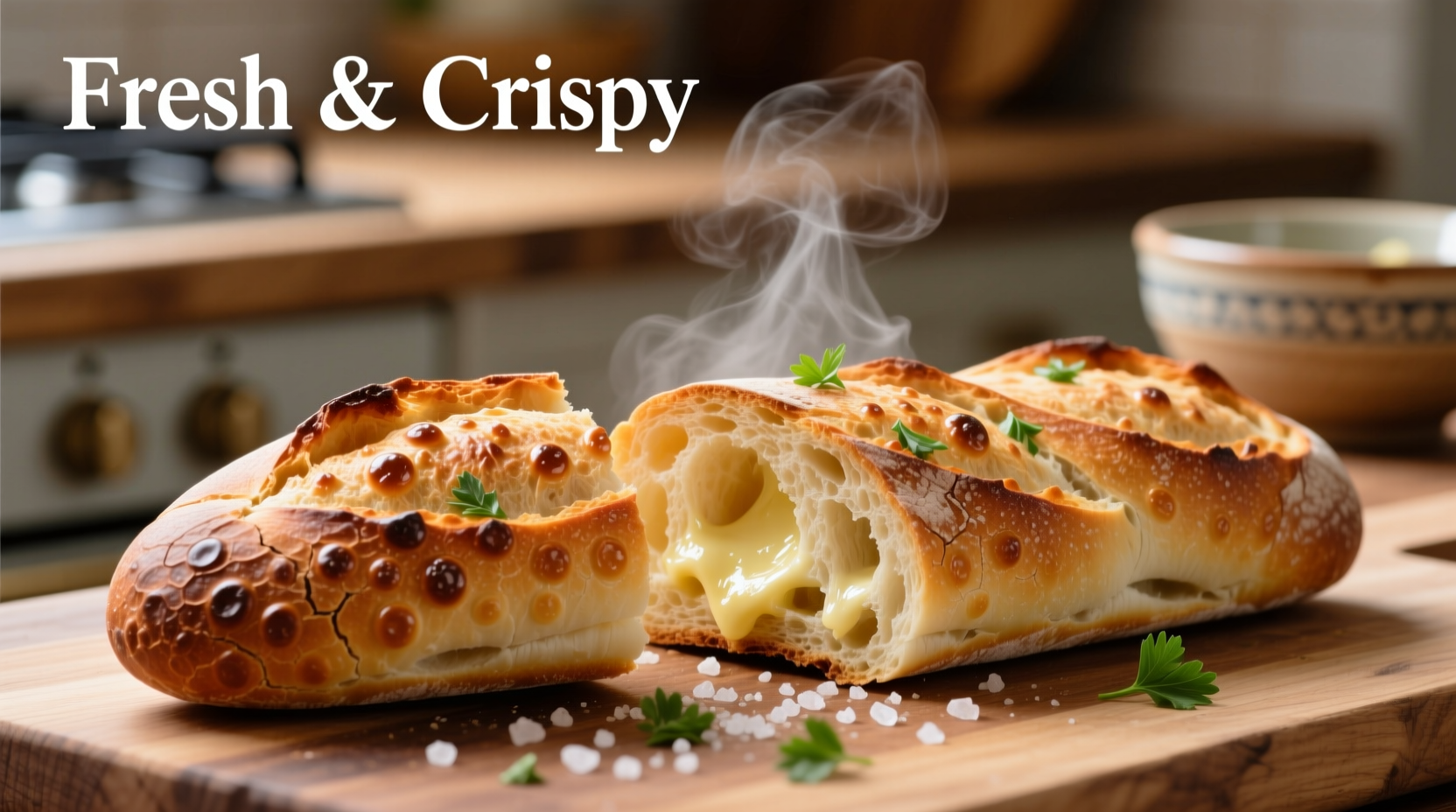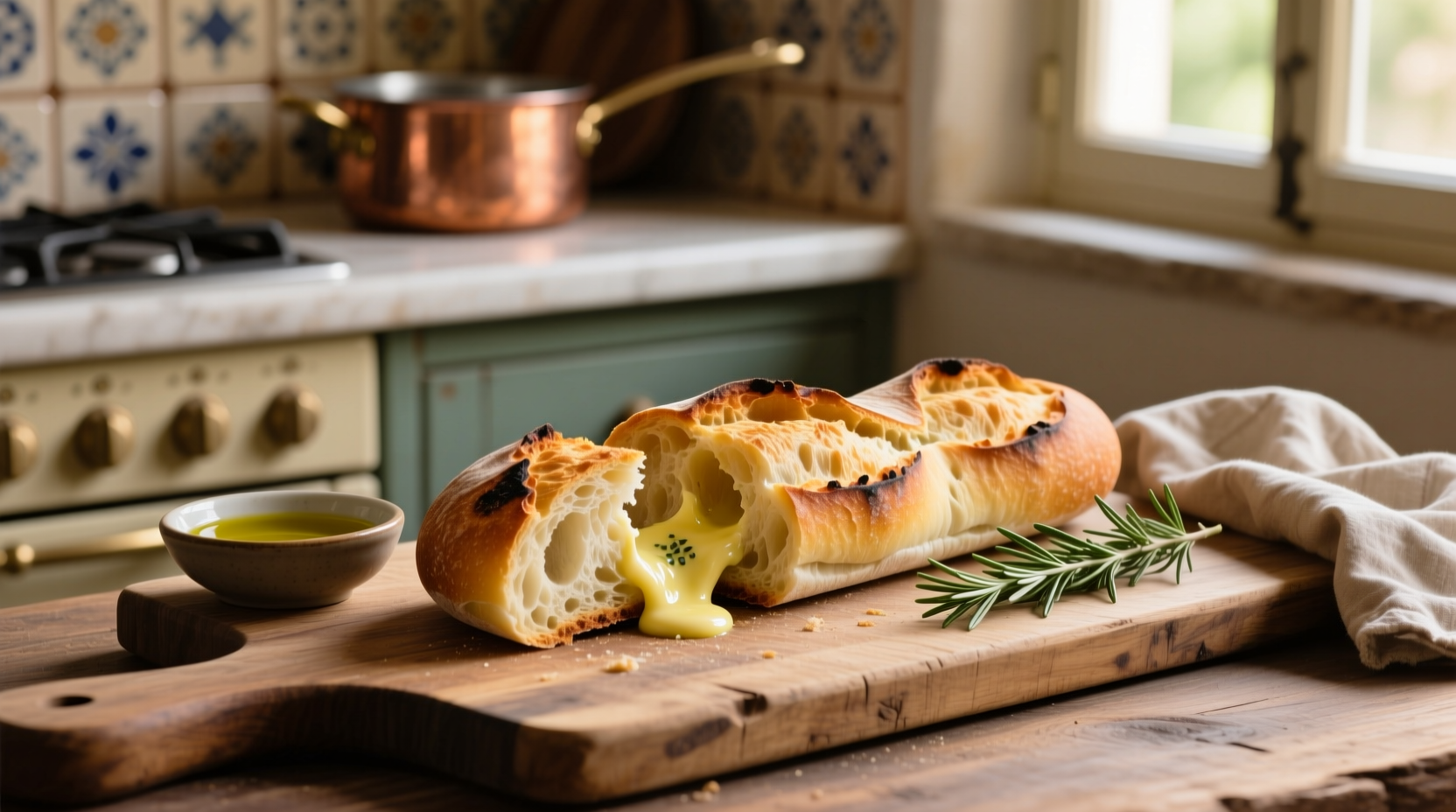Why Baguette Reigns Supreme for Garlic Bread
While many bread varieties work for garlic bread, the French baguette's unique structure creates the ideal canvas. Its thin, crisp crust provides the perfect textural contrast to the soft interior, allowing the garlic butter to penetrate without making the bread soggy. According to culinary historians at the Alimentarium Food Museum, garlic-rubbed bread has been documented in French peasant cuisine since the 16th century, with the baguette becoming the preferred vehicle after its popularization in the early 20th century.
| Bread Type | Crispness Score | Butter Absorption | Flavor Balance |
|---|---|---|---|
| Traditional Baguette | 9/10 | Ideal | Perfect |
| Sourdough | 8/10 | High | Good |
| Italian Ciabatta | 7/10 | Excessive | Fair |
| Sandwich Bread | 3/10 | Poor | Unbalanced |
Essential Ingredients: Quality Matters
The magic of exceptional garlic bread baguette lies in ingredient quality and proper ratios. Professional bakers at the American Institute of Baking recommend these precise measurements for optimal flavor without overwhelming the bread's natural taste:
- Baguette: Choose one baked within 4 hours for ideal crust-to-crumb ratio
- Garlic: 4-6 fresh cloves (yields 2 tablespoons minced) - avoid pre-minced
- Butter: 1/2 cup (1 stick) unsalted, softened to room temperature
- Parsley: 2 tablespoons fresh, finely chopped (dried won't provide same brightness)
- Salt: 1/4 teaspoon sea salt enhances all flavors

Step-by-Step Preparation: The Professional Method
Follow this chef-approved technique for restaurant-quality results at home. The key is balancing moisture control with flavor infusion - a process perfected by French boulangeries over generations.
- Prepare the baguette: Slice horizontally without cutting all the way through, creating a hinge. This maintains structural integrity while allowing butter penetration.
- Create garlic butter: Combine softened butter, minced garlic, parsley, and salt. Let sit 15 minutes for flavors to meld - crucial for authentic garlic bread baguette preparation.
- Apply evenly: Spread 70% of mixture inside, 30% on top crust. This prevents sogginess while ensuring maximum flavor.
- Bake properly: 375°F (190°C) for 12-15 minutes until golden. For extra crispness, broil 1-2 minutes at the end.
Avoid These 3 Common Mistakes
Even experienced home cooks make these critical errors when preparing garlic bread baguette:
- Using stale bread: Day-old baguettes absorb too much moisture, becoming gummy. Freshness is non-negotiable for perfect garlic bread baguette texture.
- Raw garlic shock: Never use raw garlic directly - the harsh compounds overwhelm other flavors. Letting garlic sit in butter mellows its intensity.
- Overbaking: Exceeding 15 minutes at standard temperature dries out the interior. Set a timer and watch carefully during the final minutes.
Regional Variations Worth Trying
While traditional French garlic bread baguette remains classic, these authentic regional adaptations offer exciting flavor profiles:
- Provencal Style: Add 1 teaspoon herbes de Provence and a squeeze of lemon juice to the butter mixture
- Italian-Inspired: Incorporate 2 tablespoons grated Parmesan and a pinch of red pepper flakes
- Vegan Version: Substitute butter with high-quality olive oil and add 1/2 teaspoon nutritional yeast for umami depth
Serving and Storage Tips
For optimal enjoyment of your garlic bread baguette, serve immediately while the crust remains crisp. If you must store leftovers, wrap loosely in foil and reheat at 350°F (175°C) for 5-7 minutes. Never refrigerate - this accelerates staling. According to food science research from USDA's National Institute of Food and Agriculture, bread stales six times faster in refrigeration due to accelerated starch retrogradation.











 浙公网安备
33010002000092号
浙公网安备
33010002000092号 浙B2-20120091-4
浙B2-20120091-4